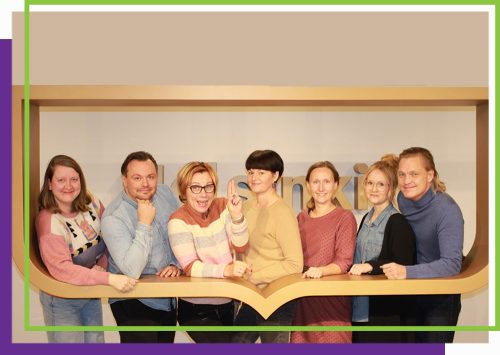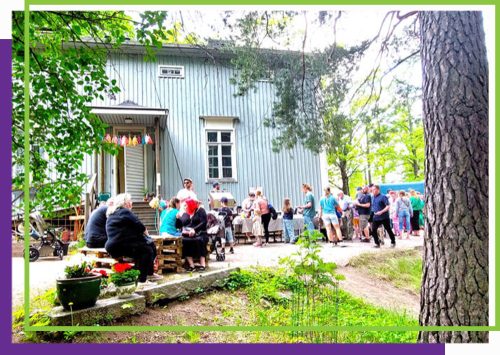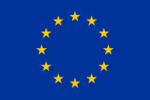 The District Liaison Officers initiative in Helsinki, Finland is a permanent participatory tool that involves designated individuals at the district level who act as local representatives of the city. The initiative aims to promote collaboration between the city administration and residents. The measure was initiated in 2017 with the adoption by the City of Helsinki of the ‘Helsinki Model of Participation and Interaction’, which include a series of ten measures to promote participatory and deliberative dimensions in city administration and governance. There are seven District Liaison Officers, one per each district of the city, plus three focusing specifically on businesses. Their main role is to inform citizens about the diverse possibilities to participate in the decision-making, improve the dialogue between them and local administration, as well as organising events and public meetings. Most importantly, they have the potential to humanise the city administration for residents by connecting various stakeholders, including the population, civil society organisations, local politicians, interest groups, and associations, with the city administration and become knowledge brokersA knowledge broker is an intermediary (an organization or a person), that aims to develop relationships and networks with, among, and between producers and users of knowledge by providing linkages, knowledge sources, and in some cases knowledge itself, (e.g. technical know-how, market insights, research evidence) to organizations in its network. or mediators.
The District Liaison Officers initiative in Helsinki, Finland is a permanent participatory tool that involves designated individuals at the district level who act as local representatives of the city. The initiative aims to promote collaboration between the city administration and residents. The measure was initiated in 2017 with the adoption by the City of Helsinki of the ‘Helsinki Model of Participation and Interaction’, which include a series of ten measures to promote participatory and deliberative dimensions in city administration and governance. There are seven District Liaison Officers, one per each district of the city, plus three focusing specifically on businesses. Their main role is to inform citizens about the diverse possibilities to participate in the decision-making, improve the dialogue between them and local administration, as well as organising events and public meetings. Most importantly, they have the potential to humanise the city administration for residents by connecting various stakeholders, including the population, civil society organisations, local politicians, interest groups, and associations, with the city administration and become knowledge brokersA knowledge broker is an intermediary (an organization or a person), that aims to develop relationships and networks with, among, and between producers and users of knowledge by providing linkages, knowledge sources, and in some cases knowledge itself, (e.g. technical know-how, market insights, research evidence) to organizations in its network. or mediators.
Municipalities in Finland are essentially independent local authorities when it comes to organising participatory or deliberative practices. These practices are guided by the principles laid down in the Finnish Local Government Act, which establishes a set of legal obligations for the municipality to carry out. The participation of residents is guaranteed in the Local Government Act’s Chapter 4 – Right of participation of municipality’s residents. Within Chapter 4, Section 27 “Opportunities to participate and exert influence” states that “residents and service users have the right to participate in and influence the activities of the municipality. Local councils must ensure that there are diverse and effective opportunities for participation”. In addition, Section 22 proposes several ways through which participation can be realised in practice, including:
1) electing representatives of service users to municipal decision-making bodies;
2) setting up administrative arrangements for sub-areas of a municipality;
3) providing information on municipal affairs and arranging opportunities for views to be
presented;
4) identifying residents’ opinions before taking decisions;
5) establishing cooperation in performing the municipality’s functions;
6) facilitating independent management, preparation and planning of matters by residents; and
7) holding local referenda.
As a result, the quality of and interest in participatory and deliberative methods has increased in Finland over recent years. Diverse tools and approaches have been adopted by different cities but this varies to a significant degree across Finnish municipalities as it is left at the discretion to city councils how they wish to fulfil these obligations set out in the Local Government Act.
Helsinki can be regarded as one of the frontrunners in participatory and deliberative practices in municipal management in Finland. The participatory and deliberative dimension in city administration and governance in Helsinki was strengthened recently through the adoption of the ‘Helsinki Model of Participation and Interaction’ in 2017, which institutionalised several earlier participatory experiments and includes measures such as District Liaison Officers in question, participatory budgetingParticipatory budgeting allows citizens or residents of a locality to identify, discuss, and prioritize public spending projects, and gives them the power to make real decisions about how money is spent., participatory practices in all city administration sectors, open dataOpen data is data that is openly accessible, exploitable, editable and shared by anyone for any purpose., digital participationAs a term, digital participation refers to the active involvement in digital society through the use of modern information and communication technology., opening city premises to public use, simplification of initiatives, feedback and voluntary work.
Finland may have been somewhat slow to embrace changes regarding participation and deliberation in decision-making processes due to its strong tradition of representative democracyRepresentative democracy, political system in which citizens of a country or other political entity vote for representatives to handle legislation and otherwise rule that entity on their behalf.. However, there have been concerns about declining voter turnout and a desire to align with international trends.
The District Liaisons Officers initiative employs ten individuals, comprising seven district representatives and three business officers. Unfortunately, we could not get the precise figures, but we were able to have an estimation of their annual costs. When you take into account salaries and various social benefits, the total expenditure per person adds up to approximately 100,000 euros per year. This cost is quite substantial, given the personnel involved. Moreover, there is an additional budget allocation nested within the central budget, which is earmarked for the coordination of events and related activities. This supplementary fund is on top of/is extra to the primary budget, expanding the financial resources at their disposal. In sum, the entire budget for this is likely to fall within the range of 1.5 to 2 million euros, or even exceeding this range, depending on various factors.
It is important to emphasise that this budget encompasses the entire participation unit, which is responsible for managing the ten measures of the ‘Helsinki Model of Participation and Interaction’. For example, in Helsinki, this budget accounts for a substantial 9 million euros per year. This budget not only covers funding for these initiatives but also includes resources for their efficient organisation and execution. The combination of these budgets ensures that the initiative has the financial means to carry out its responsibilities effectively and to engage the community in participatory activities.
The recruitment process for these officers primarily involved an open callAn open call is an audition that’s open to any performer who has interest in trying out for the role. Open calls tend to draw significantly more performers than scheduled auditions because they’re open to candidates who don’t necessarily have an agent but who are nevertheless eager to showcase their acting skills., designed to attract qualified and dedicated individuals to fill these important roles. This open call approach is a transparent and inclusive method to ensure a broad pool of potential candidates. Those selected for these positions typically possess diverse backgrounds and experiences that are well-suited for the responsibilities they will undertake.
A notable aspect of the recruitment process is the preference for candidates with prior experience working within the city government or having collaborated with civil society organisations. This preference highlights the importance of understanding the dynamics of local governance and the complexities of community engagement. It also underscores the need for officers who are well-versed in the intricacies of public administration and the specific challenges of working with civil society organisations.
Furthermore, several of the successful officers in these roles have a track record of effective collaboration with neighbourhood committeesNeighbourhood committees are groups of citizens who meet or communicate through various channels with the citizenship with the aim of making them responsible for administrative and social choices that affect the community, as well as to act as interpreters and promoters of citizens’ interests before institutions and public administration.. This experience is particularly valuable because it indicates a strong understanding of grassroots community dynamics and the ability to engage and build relationships with local residents and organisations effectively. It’s worth noting that all of them were recruited from outside the municipal system, rather than being transferred from within the municipal departments.
The Liaison Officers’ approach is notable for its commitment to inclusivity, with a primary goal of engaging a diverse cross-section of the population. However, they are acutely aware of the need to proactively reach out to segments of the community that may be less vocal in traditional public participation processes. This includes individuals who don’t speak Finnish, those grappling with social or economic obstacles to engagement, and individuals with neurodivergent traits.
While they haven’t outlined a specific strategy to address these last challenges comprehensively, they place significant emphasis on addressing language barriers. One of the ways they promote inclusivity is by advocating for the use of English during meetings. This choice aims to facilitate participation for non-Finnish speakers and individuals who are more comfortable communicating in English. By taking such steps, the organisation demonstrates a commitment to making participation more accessible to a broader and more diverse range of community members.
The development of this model was the result of an extensive, highly participatory, and deliberative process, involving thorough consultations to determine the tools and methods to refine their approach. A concept of having designated individuals at the district or borough level, acting as local representatives of the city, was introduced. This idea was integrated into the model, which now comprises 10 measures, including participatory budgeting, borough liaison offices, open access to city facilities, digital data availability, and more.
Currently, the city has established seven liaison offices, one per each district, and three business liaison officers functioning at a larger scale. They all operate under the participation unit, which is a part of the central city government. These liaison officers work both collectively and as individuals within their respective areas. Oversight is provided by one coordinator, and they frequently convene as a group to foster ongoing development within their team. However, it’s important to note that these districts are quite extensive in scale, meaning the model operates at a broader level rather than at a neighbourhood-specific level.

It is worth to differentiate the Business Liaison Officers from the District Liaison Officers: while they do operate somewhat on a non-territorial basis and focus on various types of businesses, they typically pursue their own initiatives and have minimal interaction with the other District Liaison Officers. Despite not having extensively researched and gathered further materials on their activities, they appear to be performing effectively. For instance, one officer successfully handled a major street renovation project engaging with every business located on that street, informing them about the upcoming changes, and gathering feedback and preferences. It’s essential to highlight that these Business Liaison Officers are part of the city’s economic department, not the participation unit, although they are integrated into the participation model in their unique way.
These District Liaison Officers serve as mediators, assisting in knowledge transfer and enabling citizens to engage in public life. Their work encompasses a wide range of activities, including addressing conflicts related to urban development, identifying areas of concern within the city, organising events such as neighbourhood cafes, collaborating with local residents on various topics, and participating in educational initiatives, often in partnership with schools. Their activities are diverse, and they possess a degree of freedom to shape their own agenda.
Regarding guidance and autonomy, they operate with a combination of both. While they receive guidance and work cohesively under a coordinating person, they also enjoy a fair degree of independence to advance their own initiatives, decide how to organise events and collaborations, and leverage their existing contacts and networks in their work. This flexibility allows them to adapt to the unique needs of their districts and foster a robust sense of community participation and engagement.
The stability of these liaison officer positions varies, with some individuals having served in these roles since the inception of the program, indicating a long-term commitment to the field of participation. However, over the past two years, there has been a notable turnover, with individuals typically working for a two-year period before transitioning to other roles. While high turnover isn’t the ideal scenario, it’s important to highlight that many of these departing officers continue to work within the realm of participation, maintaining their engagement and knowledge of the field. For example, one former liaison officer has moved on to work for a major Finnish foundation, one of the largest in the country, which is government-funded and concentrates on implementing new participatory methods at the national level. This transition demonstrates a degree of continuity in their involvement in civic engagement. Not all former officers may still serve as borough liaison officers, but they remain connected to the field of participation and stay informed about the developments within their small group of seven members. This continuous engagement contributes to the overall evolution and growth of participatory practices in the region.
The Liaison Officers faced an unexpected twist in their role, as their initial design and plan did not foresee their critical involvement in the participatory budgeting process. Nevertheless, they evolved into instrumental facilitators in this vital aspect of civic engagement, especially in Helsinki where the participatory budgeting process is significant. After the voting phase for participatory budgeting projects, officers found themselves at the centre of a coordinated co-production process, uniting project applicants, city officials, and various stakeholder groups. In this capacity, they played a pivotal role in facilitating collaboration on different project proposals and ensuring a high level of accessibility throughout the process. This encompassed a commitment to providing materials in various languages and formats that closely aligned with the needs of the local inhabitants.
It’s worth noting that their original purpose and employment did not specifically target this role, as they were initially meant to operate independently. However, they have since been repurposed to effectively manage the budgeting process within the participatory budgeting model, and this role remains in place. The question of whether this adaptation will persist remains intriguing, but with the upcoming cycle, which usually commences around 15 October, they are likely to be heavily involved once again.
The concept of having individuals who serve as bridges in community participation and communication is deceptively simple in principle but becomes increasingly intricate in practice. Their role aims to bridge the gap between local authorities and various stakeholders. The complexity arises from the broad mandate these individuals carry and the challenge of being single points of contact in large districts. The transferability of this initiative, in theory, is not strictly context-dependent; however, it demands substantial resource allocation. Their effectiveness hinges on the connections they establish within the broader participation interaction model of the City of Helsinki, comprising ten measures. Ideally, over time, these bridge roles would gather substantial knowledge of grassroots-level activities, transforming them into adept knowledge brokers or mediators.
In essence, the mission of these bridge roles is to humanise the city administration for its residents, providing a personable face to the city’s bureaucratic machinery. However, this task is especially challenging in the context of large districts, where the vast geographical areas make personalization more daunting. It may be more achievable in smaller, recognised neighbourhood districts, which have stronger identity-related ties. For example, a city district might encompass 15,000 to 20,000 people, while these districts encompass approximately 120,000 people or even more, accentuating the scale of the challenge.
The measure of the District and Business Liaison Officers within the City of Helsinki’s participation model presents a complex and multifaceted approach to enhancing community engagement and public participation. It allows to bridge the gap between the city administration and the local population, with a flexible response to the unique needs of different districts and has the potential to be a valuable tool for promoting community participation. However, they operate in large districts which makes it difficult to personalise interactions and provide support at the neighbourhood level. The transferability of the measure required a high investment from the administration but it has been proved to be easily implementable, and that has the potential for continuity in the field from the officers. However, the question of whether this method can be more effectively implemented in small neighbourhoods remains relevant.
Based on an interview conducted with Matti Fritsch (matti.fritsch@uef.fi), senior researcher of the Karelian Institute, Faculty of Social Sciences and Business Studies, University of Eastern Finland on 21 September 2023.
An article about the Liaisons officers when they started https://www.sttinfo.fi/tiedote/67764391/kaupunginosille-omat-stadiluotsit?publisherId=60590288.
This participatory practice has been analysed as a case study also within the EUARENAS project. Further information can be found here.

This project has received funding from the European Union’s Horizon 2020 research and innovation programme under grant agreement No 959420.